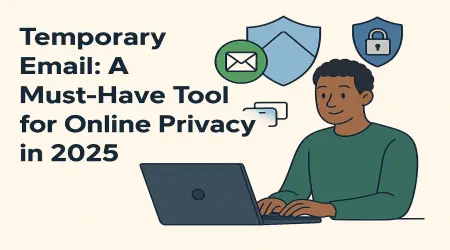

Injured and Overwhelmed? Here's Exactly What to Do After an Accident
IMMEDIATE ACTIONS (Right Now - First 24 Hours)
Step 1: Ensure Your Safety and Get Medical Help
If You're Still at the Accident Scene
- Call 911 immediately - Even if you feel "fine," adrenaline can mask serious injuries
- Stay where you are unless you're in immediate danger
- Don't move if you suspect spinal injuries
- Turn on hazard lights if you're in a vehicle
- Get to safety if possible, but avoid sudden movements
If You're Reading This Hours Later
- Seek medical attention NOW - Even if you initially declined treatment
- Go to the emergency room or urgent care, don't wait for your doctor
- Tell medical staff this is from an accident - This creates a crucial paper trail
- Be completely honest about all pain and discomfort, no matter how minor
Why This Matters: Many serious injuries (brain trauma, internal bleeding, soft tissue damage) don't show symptoms immediately. Getting medical care creates documentation linking your injuries to the accident.
Step 2: Document Everything at the Scene
If You're Still Capable and Safe to Do So
- Take photos of everything:
- All vehicles involved from multiple angles
- Property damage (cars, buildings, signs, etc.)
- The accident scene and road conditions
- Traffic signals, stop signs, or construction zones
- Your visible injuries
- License plates of all vehicles involved
- Get contact information:
- Names, phone numbers, and addresses of all drivers
- Insurance company names and policy numbers
- Names and contact info of any witnesses
- Badge numbers of responding police officers
What to Say (and NOT Say)
DO SAY:
- "I need medical attention"
- "I'd like to report what I observed"
- Basic facts about what happened
NEVER SAY:
- "I'm fine" (even if you feel okay)
- "It was my fault"
- "I'm sorry" (can be interpreted as admitting fault)
- Speculation about what caused the accident
Step 3: Handle Police and Insurance Calls Carefully
When Police Arrive
- Request a police report be filed, even for minor accidents
- Give only factual information about what you observed
- Don't speculate about causes or blame
- Get the report number and ask where you can obtain a copy
- Ask for the responding officer's card or badge number
When Insurance Companies Call
- Your own insurance: Report the accident promptly and honestly
- Other party's insurance: Be extremely cautious
- Give only basic facts (date, time, location)
- Do NOT give a recorded statement
- Do NOT discuss your injuries in detail
- Do NOT accept any settlement offers
- Say: "I'm still evaluating my injuries and will get back to you"
Critical Warning: The other party's insurance company is NOT on your side. They're looking for ways to minimize or deny your claim.
FIRST 48 HOURS: Critical Documentation Period
Step 4: Start Your Recovery Documentation
Create Your Accident File
Set up a dedicated folder (physical or digital) containing:
- Police report (obtain ASAP)
- All photos from the scene
- Contact information for everyone involved
- Insurance information and claim numbers
- Medical records and bills
- Correspondence with insurance companies
Begin Your Pain Journal
Start documenting immediately, even if you feel okay:
Sample Entry Format:
Date: [Today's Date]
Time: 8:00 AM
Pain Level: 4/10 - Neck stiffness, headache
Activities Affected: Difficulty turning head while driving
Sleep: Woke up 3 times due to neck pain
Mood: Anxious about returning to work
Medications: Took 2 ibuprofen at 7 AM
Step 5: Follow Up Medical Care
Even If You Feel Better
- Return to the ER if new symptoms develop
- Schedule appointment with your primary care doctor within 48 hours
- Request referrals to specialists if needed (orthopedist, neurologist, etc.)
- Follow ALL medical advice - this is crucial for your claim
Keep Detailed Medical Records
- Save every document: bills, prescriptions, appointment cards
- Take photos of visible injuries daily to show progression
- Ask for copies of all test results and reports
- Keep a list of all healthcare providers you see
Step 6: Notify Important Parties
Who to Contact Within 48 Hours
- Your employer - Report the accident and any work limitations
- Your health insurance - Ensure they know this is accident-related
- Your auto insurance - Even if the accident wasn't in a car
- Family members - They may need to provide care or witness testimony later
FIRST WEEK: Building Your Foundation
Step 7: Gather Critical Documents
Obtain Official Records
- Police report (usually available 3-5 days after the accident)
- Accident scene photos from police (if available)
- Witness statements (contact witnesses while memory is fresh)
- Medical records from emergency treatment
- Employment records showing missed work
Create a Timeline
Write down everything you remember about:
- The moments before the accident
- The accident itself
- Immediate aftermath
- Your injuries and symptoms since
Step 8: Understand Your Insurance Coverage
Review Your Policies
- Auto insurance: Liability, collision, comprehensive, medical payments
- Health insurance: What's covered for accident-related treatment
- Disability insurance: Short-term and long-term coverage
- Homeowner's/renter's insurance: May cover some accident types
Understand Key Terms
- Personal Injury Protection (PIP): Covers medical expenses regardless of fault
- Medical Payments Coverage: Additional medical expense coverage
- Uninsured/Underinsured Motorist: Protects you if the other driver lacks adequate insurance
- Collision Coverage: Pays for vehicle repairs
Step 9: Avoid Common Early Mistakes
Don't Do These Things
- Don't give recorded statements to the other party's insurance
- Don't sign any documents without reading carefully (except medical authorizations for your treatment)
- Don't post on social media about the accident or your activities
- Don't ignore pain or symptoms hoping they'll go away
- Don't try to "tough it out" without medical care
- Don't discuss the accident details with anyone except medical providers, police, your insurance, and your attorney
Red Flags to Watch For
- Insurance adjusters pressuring you to settle quickly
- Anyone asking you to sign documents you don't understand
- Requests for broad medical record releases
- Settlement offers before you've finished medical treatment
- Pressure to use specific repair shops or medical providers
FIRST MONTH: Strategic Decisions
Step 10: Evaluate the Need for Legal Representation
You Likely Need an Attorney If:
- You have significant injuries requiring ongoing treatment
- The other party's insurance is disputing fault or offering inadequate compensation
- You've missed substantial work due to your injuries
- You're dealing with permanent disabilities or disfigurement
- The accident involved multiple parties or complex circumstances
- You're feeling overwhelmed by insurance company demands
Choosing the Right Attorney
- Specializes in personal injury law in your state
- Has experience with your type of accident
- Works on contingency (no upfront fees)
- Has good references and reviews from past clients
- Communicates clearly and makes you feel comfortable
Questions to Ask Potential Attorneys
- How many cases like mine have you handled?
- What is your success rate with similar cases?
- How do you communicate with clients throughout the process?
- What is your contingency fee percentage?
- What expenses will I be responsible for?
- How long do cases like mine typically take?
Step 11: Manage Your Recovery
Follow Medical Treatment Plans
- Attend all appointments - Missing appointments hurts your credibility
- Follow prescribed therapies even if you feel better
- Take medications as directed and document their effects
- Report new symptoms promptly to healthcare providers
- Get second opinions for serious diagnoses
Document Your Limitations
- Work restrictions and missed opportunities
- Household tasks you can no longer perform
- Recreational activities you've had to give up
- Social events you've missed due to injuries
- Sleep disruption and its effects on daily life
Step 12: Handle Employment Issues
Communicate with Your Employer
- Provide medical documentation for any work restrictions
- Understand your rights under the Family and Medical Leave Act (FMLA)
- Know your benefits including short-term and long-term disability
- Keep records of missed work and lost wages
- Document accommodations your employer makes or refuses to make
Protect Your Job
- Follow company protocols for reporting absences
- Provide medical updates as required
- Request reasonable accommodations if you have permanent limitations
- Don't rush back to work before you're medically cleared
ONGOING MANAGEMENT: The Long Game
Step 13: Track All Damages
Economic Damages (Easy to Calculate)
- Medical bills: Emergency care, doctor visits, medications, therapy
- Lost wages: Time off work, reduced earning capacity
- Property damage: Vehicle repairs, personal items destroyed
- Future medical costs: Ongoing treatment, future surgeries
- Transportation costs: Getting to medical appointments
Non-Economic Damages (Harder to Prove)
- Pain and suffering: Physical discomfort and limitations
- Emotional distress: Anxiety, depression, PTSD
- Loss of enjoyment: Activities you can no longer participate in
- Loss of consortium: Impact on relationships with family
- Disfigurement: Scarring or permanent physical changes
Step 14: Deal with Insurance Companies Strategically
Working with Your Own Insurance
- Be honest about what happened
- Provide requested documentation promptly
- Understand your coverage limits and deductibles
- Ask questions if you don't understand something
- Keep records of all communications
Dealing with the Other Party's Insurance
- Be polite but cautious in all communications
- Stick to basic facts about the accident
- Don't discuss your injuries in detail
- Refer complex questions to your attorney if you have one
- Don't accept quick settlement offers without full evaluation
Step 15: Prepare for the Settlement Process
Understanding Timeline Expectations
- Simple cases: 3-6 months for minor injuries
- Complex cases: 1-3 years for serious injuries
- Litigation: Can add 1-2 additional years if trial is necessary
Factors That Affect Settlement Value
- Severity of injuries and impact on daily life
- Clear fault determination and strength of evidence
- Quality of medical documentation supporting your injuries
- Your credibility and consistency in reporting
- Insurance policy limits of all parties involved
- Local jury verdicts for similar cases
SPECIAL SITUATIONS: When Things Get Complicated
If You're Dealing with a Hit-and-Run
- Report to police immediately and get a report number
- Check for surveillance cameras that may have captured the incident
- Canvas for witnesses who might have seen the fleeing vehicle
- Contact your insurance about uninsured motorist coverage
- Consider hiring a private investigator to locate the other driver
If the Other Driver Was Uninsured
- Use your uninsured motorist coverage if you have it
- Check if the driver has any assets worth pursuing
- Consider suing even if they lack insurance (you might collect later)
- Explore other potential defendants (employers, vehicle owners, etc.)
If You Were Partially at Fault
- Don't admit fault but be honest about what happened
- Understand your state's fault laws (comparative vs. contributory negligence)
- Document everything that supports your version of events
- Consider legal representation as these cases are more complex
If You Have Pre-Existing Conditions
- Be upfront with medical providers about your medical history
- Document how the accident worsened existing conditions
- Get expert medical testimony explaining the "aggravation" of prior injuries
- Keep detailed records showing the difference between before and after the accident
YOUR RECOVERY TEAM: Who's in Your Corner
Medical Team
- Emergency physicians: Initial trauma assessment
- Primary care doctor: Ongoing care coordination
- Specialists: Orthopedists, neurologists, pain management doctors
- Physical therapists: Rehabilitation and functional improvement
- Mental health professionals: Counseling for emotional trauma
Legal Team
- Personal injury attorney: Primary legal representation
- Paralegals: Day-to-day case management and communication
- Expert witnesses: Medical professionals, accident reconstruction specialists
- Investigators: Gathering evidence and interviewing witnesses
Support Network
- Family and friends: Emotional support and practical assistance
- Support groups: Connect with others who've had similar experiences
- Employee assistance programs: Counseling and resources through work
- Community resources: Transportation, meal assistance, home care
WARNING SIGNS: When to Get Help Immediately
Medical Red Flags
- Worsening pain or new symptoms developing
- Signs of infection in wounds or surgical sites
- Mental health crisis: Suicidal thoughts, severe depression
- Medication problems: Adverse reactions or dependency issues
- Lack of improvement despite following treatment
Legal Red Flags
- Insurance company pressure to settle quickly
- Denied claims without clear explanation
- Surveillance by insurance investigators
- Missed deadlines for filing claims or lawsuits
- Conflicts of interest with your attorney
Financial Red Flags
- Inability to pay for necessary medical treatment
- Mounting bills while waiting for settlement
- Job loss due to inability to work
- Pressure from creditors or medical providers
- Insurance companies refusing to pay legitimate claims
TAKING CONTROL: Your Action Checklist
Immediate (Today)
- [ ] Seek medical attention if you haven't already
- [ ] Start documenting everything
- [ ] Secure the accident scene evidence (photos, witness info)
- [ ] Report to your insurance company
- [ ] Create an accident file for all documents
This Week
- [ ] Obtain the police report
- [ ] Follow up with medical care
- [ ] Begin your pain and recovery journal
- [ ] Contact witnesses while memory is fresh
- [ ] Research potential attorneys if needed
This Month
- [ ] Complete medical evaluations
- [ ] Organize all documentation
- [ ] Evaluate need for legal representation
- [ ] Understand your insurance coverage
- [ ] Develop a treatment plan with healthcare providers
Ongoing
- [ ] Maintain detailed records of all impacts
- [ ] Follow all medical advice consistently
- [ ] Communicate regularly with your legal team
- [ ] Track all expenses related to the accident
- [ ] Focus on your physical and emotional recovery
THE ROAD AHEAD: What to Expect
Recovery Timeline
Weeks 1-4: Focus on immediate medical needs and documentation Months 2-6: Ongoing treatment, evidence gathering, potential settlement negotiations Months 6-12: Maximum medical improvement, serious settlement discussions Year 2+: Possible litigation if settlement cannot be reached
Emotional Journey
It's normal to experience a range of emotions after an accident:
- Shock and disbelief in the immediate aftermath
- Anger and frustration as you deal with insurance and medical systems
- Depression and anxiety about your future and recovery
- Hope and determination as you begin to heal and seek justice
Your Rights
Remember that you have the right to:
- Quality medical care for your injuries
- Fair compensation for your damages
- Legal representation to protect your interests
- Time to recover without pressure to settle
- Dignity and respect throughout the process
FINAL WORDS: You Will Get Through This
Being injured in an accident is one of life's most challenging experiences. You're dealing with physical pain, emotional trauma, financial stress, and a complex legal system all at once. It's overwhelming, and it's okay to feel scared and uncertain.
But here's what you need to know: You have rights, you have options, and you have people who can help.
Every step you take following this guide gets you closer to recovery and justice. Every document you save, every medical appointment you attend, and every day you record your pain is building toward a better future.
You are not alone in this journey. Millions of people have walked this path before you and found their way to recovery and fair compensation. With the right knowledge, the right team, and determination, you can too.
Your accident doesn't define you – how you respond to it does.
Take it one day at a time, follow this roadmap, and trust that while this chapter of your life is difficult, it's not the end of your story. Better days are ahead.
EMERGENCY CONTACTS AND RESOURCES
Keep These Numbers Handy
- 911: Emergency services
- Your doctor: Primary care physician
- Your insurance company: Policy and claim numbers
- Your attorney: If you have legal representation
- Poison Control: 1-800-222-1222
- Crisis Hotline: 988 (Suicide & Crisis Lifeline)
Useful Websites
- National Highway Traffic Safety Administration: nhtsa.gov
- Insurance Information Institute: iii.org
- American Bar Association: americanbar.org
- Mental Health America: mhanational.org
- Your state's insurance commissioner: [Search for your state + insurance commissioner]
Apps for Documentation
- Voice memos: Record important conversations (where legal)
- Photo apps: Organize accident and injury photos
- Pain tracking apps: Monitor symptoms over time
- Calendar apps: Track appointments and deadlines
Remember: This guide provides general information and should not replace professional medical or legal advice. Every accident is unique, and laws vary by state. Consult with qualified professionals for advice specific to your situation.










